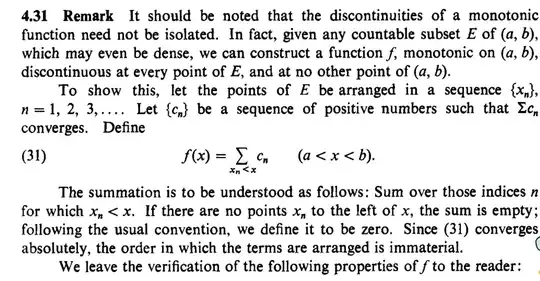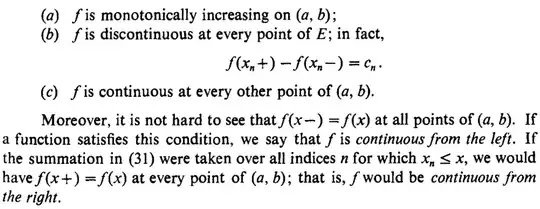As the verification is left to the reader, I try to verify it and it seems it is somehow natural: when $x_n$ is a point of $E$, when $x\ge x_n$, the $c_n$ is added, while when $x_n$ is not a point of $E$, as the series is convergent, by Cauchy theorem the gap between the $x\le x_n$ and the $x\ge x_n$ can be arbitrary small.
But I found when I change this idea to the strict proof, I can reach it. Could you write down the strict proof? Thank you.
EDIT: Thanks for the comment. Now I understand how to write strictly for proving the discontinuous point, but I still can not write it down in the epsilon-delta language when proving continuous. I think the reason that I can not write it in epsilon-delta language is that (just suppose the $E$ is rational numbers in $(a,b)$ or some other countable but not finite set), for each rational number though I can enumerate and number it I still can not no what definite number in a enumeration it belongs to.

